Bermuda is a warm-season grass that is highly valued for its extraordinary heat and drought tolerance. Bermuda is of particular importance among other warm-season grasses as it forms a dense turf that recovers from damage rather quickly. This makes it an ideal choice for turf areas with high foot traffic. In this article, you will learn how to get bermuda grass to spread fast.
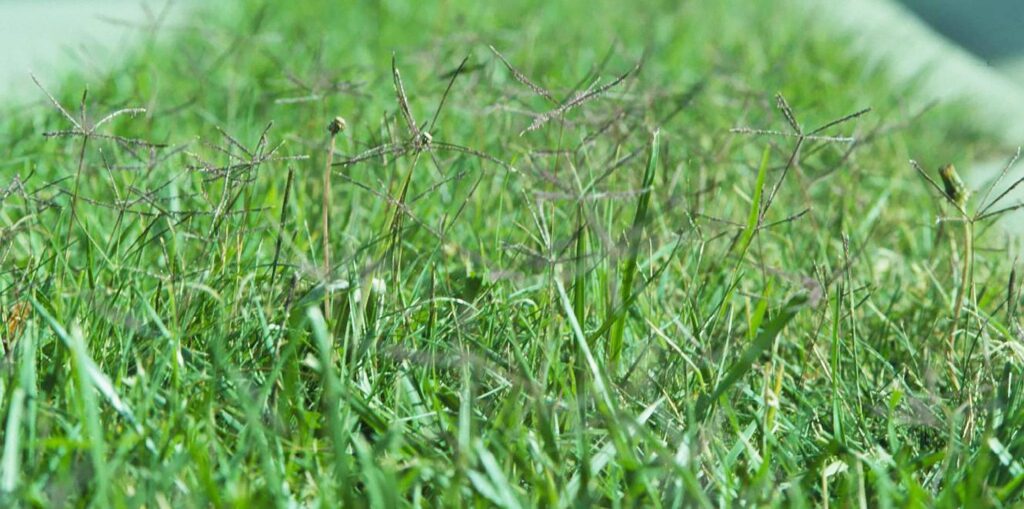
May is the best time to plant and spread a Bermuda lawn.
In addition to the qualities mentioned above, Bermuda grass has a number of other features that make it a favorite of lawn owners throughout the United States. However, the climate requirements of Bermuda grass limit its widespread use.
Depending on where you live, Bermuda grass might be the best choice for you in case you are setting up a new lawn. Read our article to learn about the tips and tricks of setting up a Bermuda lawn and how you can make Bermuda grass spread faster. Happy Reading!
Identification And Quick Facts
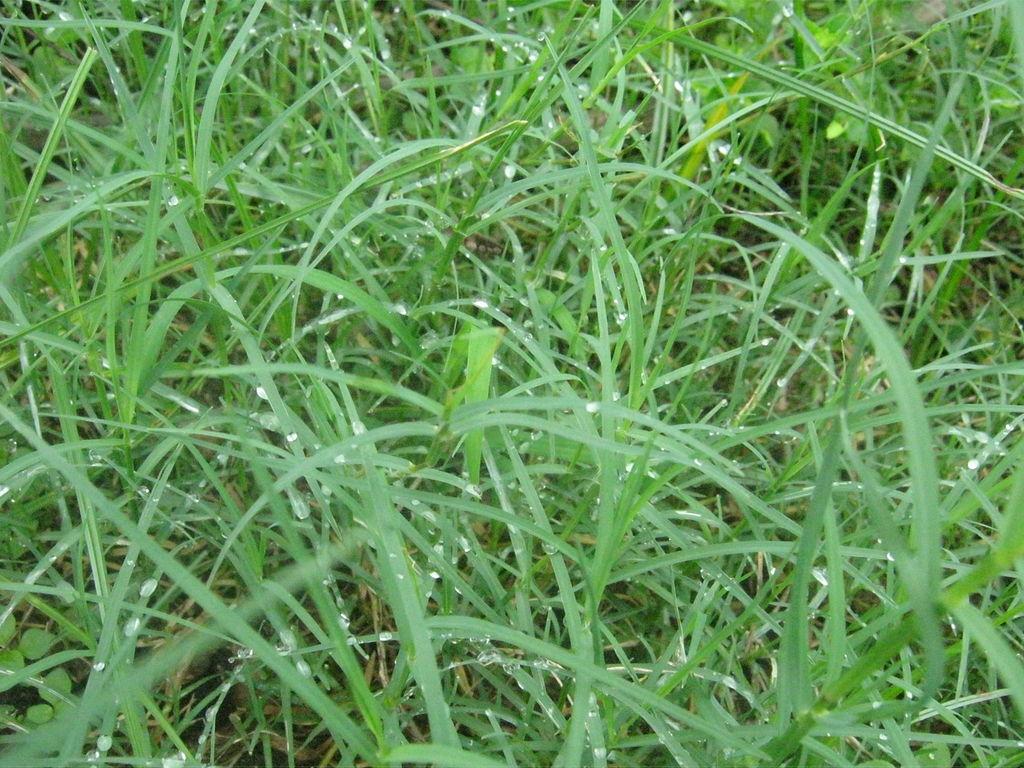
Bermuda grass leaves.

Bermuda grass seed heads.
Bermuda is a common lawn grass in the southern regions of the United States, from California to Florida. The grass has a characteristic coarse texture and seed heads that resemble a bird’s foot. The seed heads are produced from early summer until early fall. There are also tiny hairs at the junction of the leaf blade and leaf sheath.
The leaves are blue-green and can also be heavily or sparsely hairy. Additionally, the leaves have a sharp tip, and the grass overall is four to twelve inches long. Roots are fibrous with deep rhizomes, and with the help of these rhizomes and above-ground stolons, Bermuda grass spreads quickly and forms a dense mat on the soil surface.
| Scientific name | Cynodon dactylon |
| Other names | Scutch grass, Bahama’s grass, Dubo, Couch grass, Wiregrass, Deil’s grass |
| Plant type | Herbaceous perennial |
| Mature size | 4 to 12 inch tall |
| Growth Temperature | 24 and 37 °C (75 and 99 °F) |
See also: St. Augustine Grass Vs. Bermuda Grass: What’s The Difference And Which Is Better?
How Does Bermuda Grass Spread?
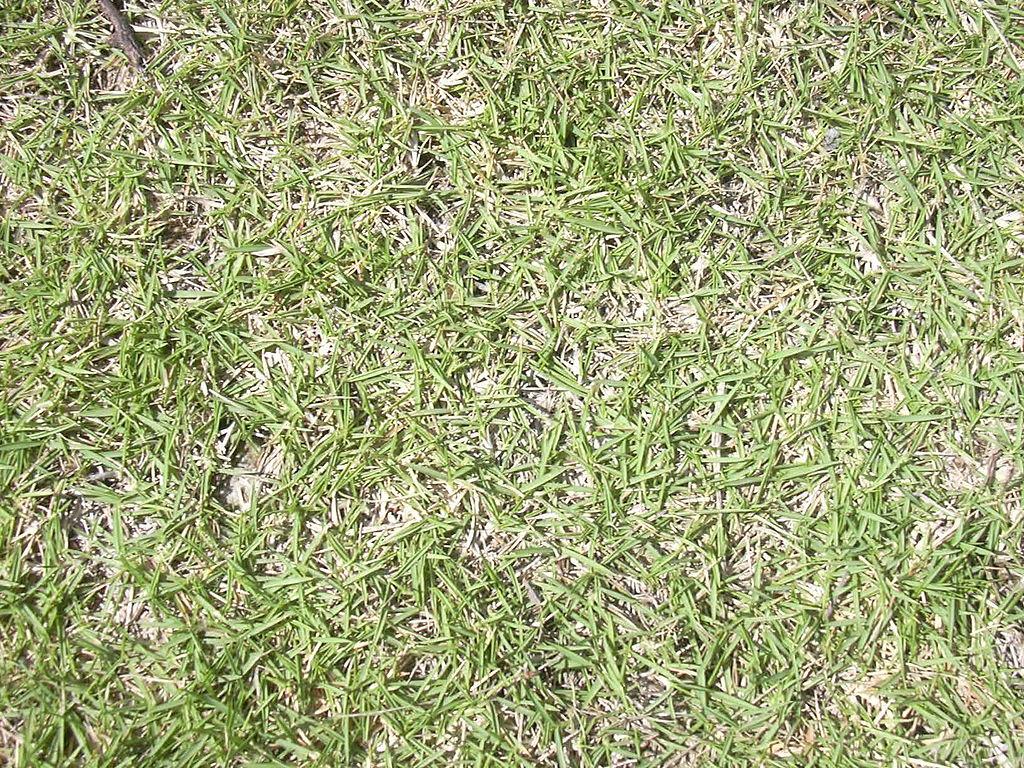
While actively growing, Bermuda grass can quickly take over entire lawns and garden beds.
Bermuda grass spreads by rhizomes and stolons. Rhizomes are underground roots that grow laterally from the parent plant. Similarly, stolons are above-ground stems that grow horizontally over the lawn soil. Both stolons and rhizomes have nodes from which new shoots emerge. Rhizomes and stolons together enable the Bermuda grass to spread quickly.
Due to its aggressive growth rate, lawn owners often use Bermuda grass to fill up any bare spots quickly. However, in the home lawns, Bermuda grass can sometimes become a problem as it quickly. It can even overtake areas you might want to use to plant flowers, vegetables, or other plants.
See also: Shade Tolerant Grass Species | Which Species Is The Best?
How To Get Bermuda Grass Spread Fast?
If you wish to establish a new Bermuda grass lawn, there are some things you can do to ensure that Bermuda grass spreads faster. By following the below-mentioned points, you can quickly establish a healthy lawn within a matter of just a few weeks:
1. Growing Bermuda Grass

Instead of using sod, plant Bermuda grass with seeds for the fastest growth.
While planting Bermuda grass, make sure that you choose the right time. The grass should be planted in the peak growing season, lasting from late spring through hot summer months. The grass grows and spreads faster during this time than any other time of the year. Also, avoid planting the grass during extremely cold or hot weather.
During these times, the grass might have entered the dormancy period. In dormancy, the growth of the grass slows down, making the process of establishing a lawn slow and cumbersome. Another thing to keep in mind is that for Bermuda grass to spread the fastest, it must be established using seed.
To seed grass properly, spread Bermuda grass seeds evenly over the lawn soil. After that, gently rake the soil and water the lawn. It will ensure that there are no bald spots on the lawn when it develops.
2. Watering Bermuda Grass
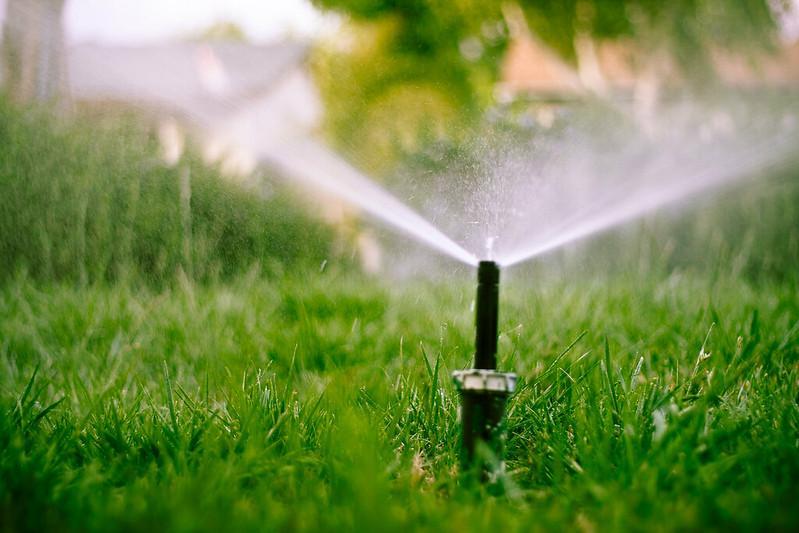
Proper watering of your lawn ensures healthy grass growth.
New sod or newly established grass requires frequent watering to ensure healthy root growth. A proper root anchorage will ensure that Bermudagrass lawns grow quickly and make a dense turf. Before root establishment, Bermuda grass needs a lot of water.
When actively growing, Bermuda needs around one inch of water every week. However, when the weather is hot and dry, the grass might need around two inches of water in a single week. The grass might enter dormancy when it becomes too hot and too dry.
Standing water is also harmful for healthy grass growth. So, ensure that there are no drainage issues on the lawn. However, overwatering your lawn can also cause many problems as well. For example, it can cause the grass to rot and make the plants prone to fungal infections.Also, infrequent deep watering is far better than frequent shallow watering. It ensures that the roots grow deep, making them resilient to heat and drought.
3. Mowing Bermuda Grass
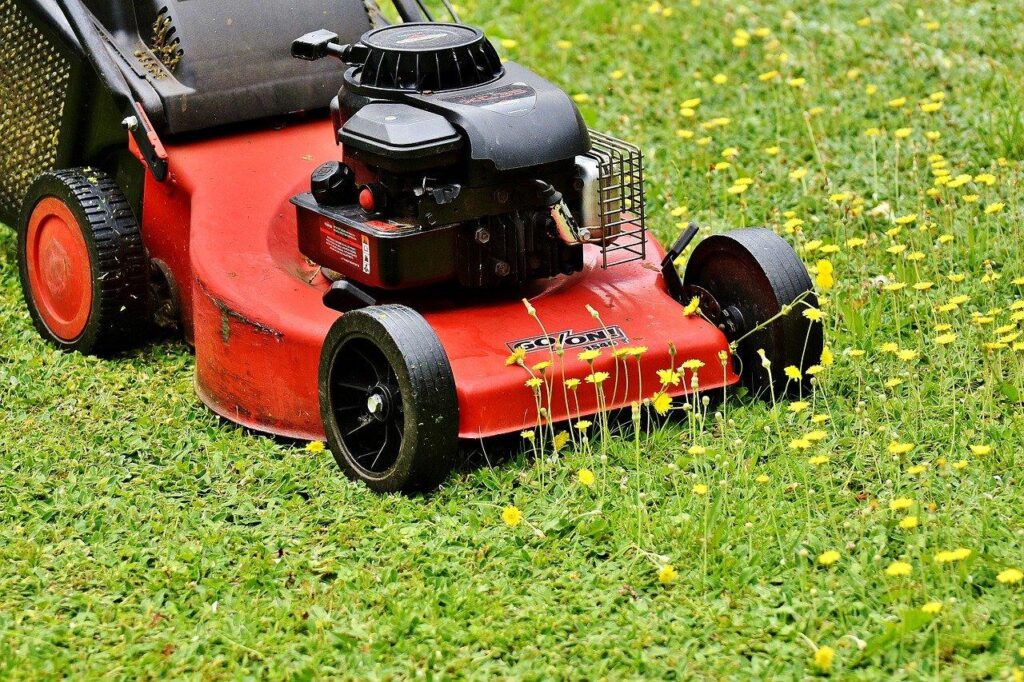
A proper mowing height can help the Bermuda grass spread quicker.
When there is more lateral growth than vertical growth, Bermuda grass spreads faster. And the best way to ensure lateral growth is by mowing the grass. When the new grass is around two inches tall, it is time to start mowing it. However, when you clip the grass, ensure that no more than one-third of the grass is cut. A proper mowing height also ensures that the grass does not lose its anchorage in the soil.
To help the Bermuda grass spread faster, set the mowing height at about an inch. Always use a clean and sharp blade when you mow the grass. Also, it is better to leave the grass clippings behind when you mow the lawn. The clippings degrade quickly and return nutrients to the soil, ensuring healthy grass growth.
4. Fertilizing Bermuda Grass
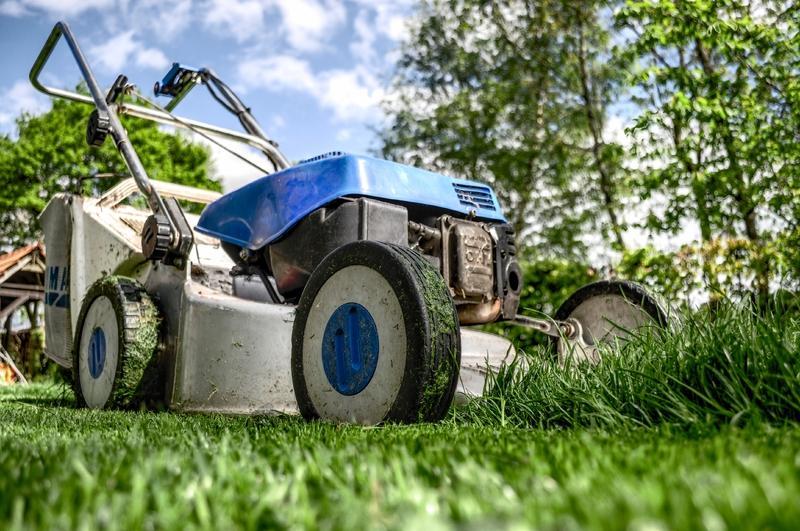
Apply fertilizer every six to eight weeks to ensure fast growth.
Bermuda grass grows best in nitrogen-rich soil. Therefore, using a nitrogen fertilizer will ensure proper and faster growth of the Bermuda grass. However, you also need to be careful while using nitrogen fertilizer on your lawn. A fertilizer that releases nitrogen rather quickly can burn the grass roots.
So, make sure you always use a fertilizer that releases its nutrients slowly into the soil. Also, depending on your soil type, you might need to use a different fertilizer. So, it is always best to test your lawn soil before planting the grass.
Bermuda Grass Weed Prevention
Weed control is an integral component of lawn care. Weeds can compete with the grass in bermudagrass lawns and slow down the development of grass very significantly. The most effective way of preventing weeds from taking over your lawn is to use pre-emergent herbicides. These herbicides ensure that the weed seeds do not germinate and develop into noxious weeds that could damage your lawn health and aesthetics later on.
Soil Amendments For Bermuda Grass
For the Bermuda grass to show its best growth, soil pH should be anywhere between 5.8 and 7.0. Compacted soil can also hinder grass growth, so it is better to aerate your lawn to help the grass grow thicker and faster. Ensuring healthy soil will also ensure that there is no bare spot left on the lawn when the grass grows.
Bermuda Grass Sun Requirements
Bermuda grass does not grow well in shaded areas. For Bermuda grass to thrive, it needs full sun. So, make sure that your yard has access to direct sunlight if you want your Bermuda lawn to spread and flourish quickly.
Frequently Asked Question (FAQs)
How Much Will Bermuda Grass Spread?
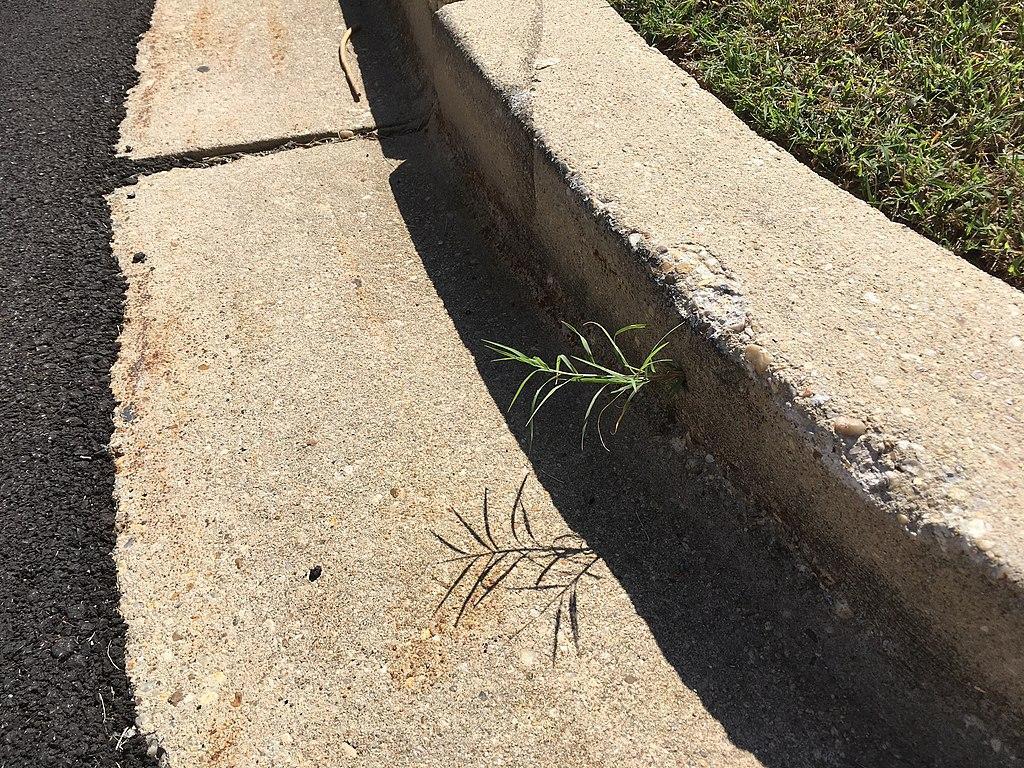
Bermuda grass growing out of the curb.
If the conditions are perfect, Bermuda grass is a rampant spreader. As already stated, Bermuda grass uses both stolons and rhizomes to grow. Together, both of these ensure that Bermuda grass spreads as quickly and as far as it is allowed.
The rapid progress is also a nightmare for some lawn owners as Bermuda grass can spread to unwanted and even the most likely places. The best way to prevent Bermuda from leaking to unwanted areas is by edging your lawn or garden.
How Fast Does Bermuda Grass Spread?
The rate of growth depends on several factors. These include sun availability, water availability, temperature, and soil condition. However, suppose the conditions are totally perfect, which is rarely the case. In that case, it will take about six weeks for the Bermuda grass to develop into a full-fledged turf from the day of the germination of seeds.
Also, the time of the year when the grass is planted matters a lot too. The grass planted during the peak season shows the best and fastest growth.
Does Sand Help Bermuda Spread?
Adding sand to your lawn will not help Bermuda grass spread faster. It has nothing to do with the spreading of Bermuda grass whatsoever. In fact, adding sand to the topsoil of your lawn can cause drainage and compaction issues.
Will Bermuda Grass Fill In Bare Spots?
Given that the lawn is maintained well, Bermuda grass can quickly fill up any empty spots present on your lawn. It has a fast-spreading rate and promptly covers up bare areas of your yard.
How Often Should I Mow Bermuda Grass?
Since Bermuda grass spreads faster than other warm-season grasses, you will have to mow your lawn frequently. The ideal is to mow your lawn every five to seven days to ensure the best and fastest growth.
Sources for Further Reading
- Bermudagrass. (2022). Retrieved 17 April 2022, from https://hgic.clemson.edu/factsheet/bermudagrass/
- Bermudagrass. (2022). Retrieved 17 April 2022, from https://aggie-horticulture.tamu.edu/plantanswers/turf/publications/Bermuda.html
Carolina Lawns: A Guide to Maintaining Quality Turf in the Landscape | NC State Extension Publications. Retrieved 17 April 2022, from https://content.ces.ncsu.edu/carolina-lawns
Hop you learn a lot on how to get bermuda grass to spread fast in this article. Also, check out our other articles:
Ten Extraordinary Types of Tall Cactus Can Revive Your Yards and Landscapes
What Is Digging Holes In Your Lawn? Causes and Solutions
5 Breath-taking Types Of Calathea For Your Private Tropic Corner







